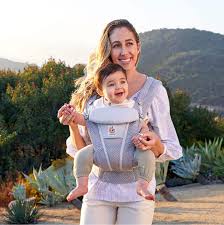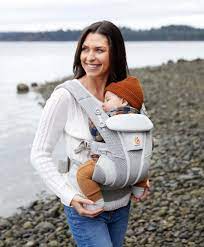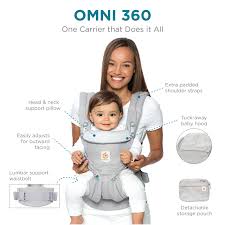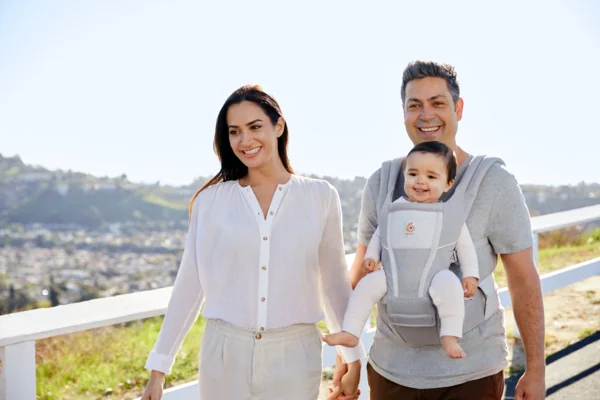1 Introduction

Hey, parents do you want to know about is forward facing carrier is bad for baby?I just bought for you new updated news for you about is forward facing carrier bad for babies, because every parent wants to know and wants to use the best baby carrier for a baby
While some parents appreciate the added exposure to nature that these carriers offer, concerns exist regarding their safety and impact on a baby’s physical development.
Well this article will help you choose forward-facing carriers, in this article, we will help you make informed decisions and choose the best carriers
2 What Is a Forward-Facing Carrier?
A forward-facing carrier is a kind of baby carrier that allows the infant to be carried facing the parent with their face pointing outward. The way this design allows babies to see their surroundings is what makes it so popular.
Forward-facing carriers are generally adaptable to inward-facing postures as well, which makes them suitable for a variety of uses and tastes.

3 Benefits of Babywearing
Generally speaking, there are several advantages to babywearing. It assists with digestion, body temperature regulation, and infant physical development. Emotionally, having a close relationship with a parent can help bond, lower stress, and improve sleep. Babywearing keeps the infant close and safe while providing parents with the ease of hands-free carrying and the ability to simplify daily tasks. I love to use forward facing baby carrier,and my friends also using this carrier perfect for outdoor adventure
4 Arguments in Favor of Forward-Facing Carriers
Forward-facing carriers are favored because they give infants access to an environment that is stimulating. The baby can watch and engage with their environment while they face forward, which can help with cognitive development.
Furthermore, a lot of parents say that when their infants face forward, they seem happier and more interested, which makes the whole experience of going somewhere more pleasurable for everyone.
5 Potential Risks of Using a Forward-Facing Carrier
Nevertheless, there are hazards associated with forward-facing carriers even with these advantages. The possible effects on a baby’s physical development have drawn criticism, especially about hip and spine health.
A baby’s growing hips and backbone may be overstressed by forward-facing positions, which may exacerbate conditions like hip dysplasia. Also, a newborn may encounter sensory overload as a result of continuous stimulation, which will make it harder for them to assimilate information and unwind.

6 Understanding Hip Dysplasia in Babies
Hip dysplasia is a situation where the hip joint does not form correctly, which might generate hardships in the future. When it comes to babywearing, this issue is very concerning, primarily when using carriers that don’t adequately support the hips. A baby’s legs may ride in a forward-facing carrier instead of being kept in the “M” form, which is important for the growth of strong hips. To bypass putting too much pressure on the hip joints, experts advise using carriers that support the baby’s thighs.
7 The Impact of Overstimulation
The possibility for overstimulation is another issue with forward-facing carriers. Although infants have a natural interest, extreme stimulation might overtax their growing neurological systems.
Babies in forward-facing carriers are constantly revealed to their environment, which can be engaging and appealing at the same time.
Overstimulation displays as fussiness, sleeplessness, and crankiness. It’s critical to pay awareness to your baby’s movements and, when required, provide a break from highly sensitive events.
8 Ergonomics of Baby Carriers
The ergonomics of babywearing are very important. An ergonomic carrier lowers the chance of strain and discomfort by supporting the parent’s and baby’s natural posture.
Although convenient, forward-facing carriers frequently sacrifice ergonomics. Due to the baby’s uneven weight distribution, the parent’s posture may change and they may have back pain.
Conversely, inward-facing carriers are more ergonomic since they typically provide the baby’s hips and spine with more support.
9 Parental Comfort and Convenience

Another thing to think about is the parent’s comfort level. The manner a parent carries their infant can change when they are forward-facing, which could put stress on their back, neck, and shoulders.
While the infant can be occupied for extended lengths of time with these carriers, it’s important to weigh that advantage against the requirement for comfort.
Alternatives such as hip carriers or inward-facing carriers could make the experience more comfortable for both parent and child.
10 Expert Opinions on Forward-Facing Carriers
There is debate among pediatricians and child development experts on forward-facing carriers. Some recommend parents to use them sparingly and to pay special awareness to their baby’s convenience because of the potential dangers to hip action and the possibility of overstimulation.
However, some professionals believe that forward-facing carriers can be a fun and engaging option, particularly for short periods of time and with older babies who have more powerful head and neck control.
11 Case Studies and Real-Life Experiences
Numerous parents have shared their forward-facing carrier experiences, offering insightful information about how to use them in real-world situations. Some parents say that their infants were entertained and involved on outings while they were facing forward.
Others, however, decided to cut back on their use after noticing symptoms of discomfort or overstimulation. Additionally, observational studies have indicated that although forward-facing carriers may be entertaining, they have to be used sparingly in order to prevent any possible long-term consequences on a child’s physical development.
Best baby carrier for inward-facing
Ergobaby Omni breeze
Baby Tula
Contours Baby Carrier Newborn to Toddler
Boppy Baby Carrier
12 Tips for Safe Babywearing
Selecting a carrier that appropriately supports your baby’s hips and spine is essential for healthy babywearing. Seek out carriers where the infant’s legs are kept in a spread-squat posture, with the knees higher than the lower body.
Never exceed the weight and age restrictions specified by the manufacturer, and don’t leave your child in the carrier for longer than necessary. Check your baby’s comfort level frequently and modify as necessary.
13 Alternatives to Forward-Facing Carriers
There are many options to think about if the possible hazards of forward-facing carriers worry you. Inward-facing carriers allow for personal contact and provide excellent hip and spine support for your infant.
Hip carriers are a wonderful choice for older babies since they more equally distribute the baby’s weight. Additionally, slings and wraps can offer a snug and comfortable carry, enabling a variety of positions that are suitable for both parent and child.
When to Consider Using a Forward-Facing Carrier
Nevertheless, there are situations in which employing a forward-facing carrier makes sense. For example, consider using a forward-facing carrier for brief periods of time once your baby has developed strong head and neck control, which is normally around 5 to 6 months. It can be especially helpful in stimulating settings where your infant can safely investigate the
Conclusion
The discussion around forward-facing carriers frequently brings up possible issues such as hip growth or overstimulation. These carriers aren’t always harmful, though. Orienting your infant forward-facing can provide fascinating chances for exploration, provided that it is done carefully and with consideration for their comfort and developmental stage.
Moderation and being aware of your baby’s requirements are crucial. In the end, the ideal carrier position promotes connection and interest in your child while assisting with their growth and enabling them to securely explore their surroundings.


